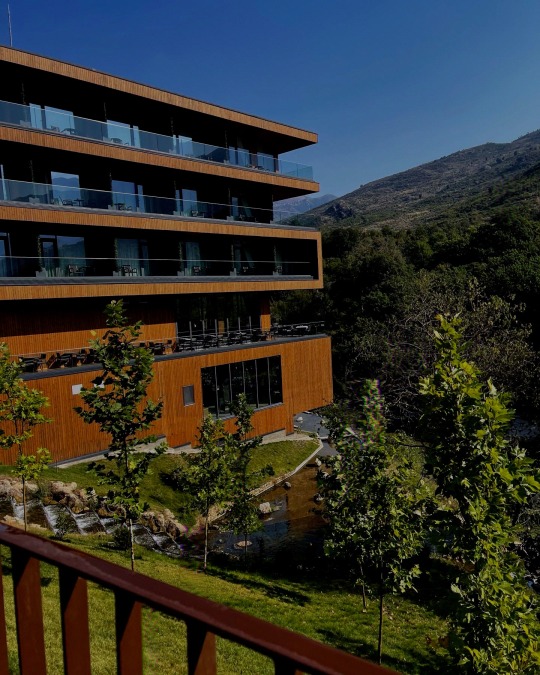#tepelene
Text
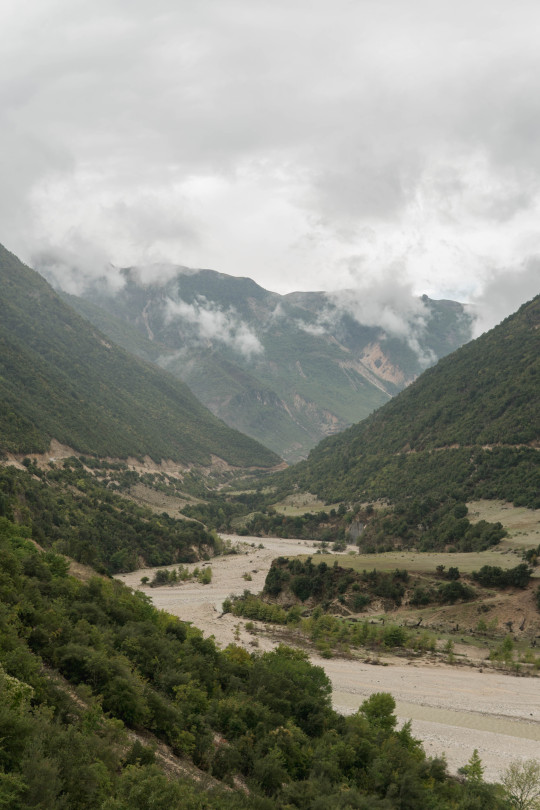
23 notes
·
View notes
Text

Vaj ulliri ekstra i virgjer ne shitje me shumice ose pakice dergesa me poste . Na kontaktoni ne numrin e telefonit +355695870548
https://produktebio.net/
#vajulliri#vajullirineshitje#vajullirineshitjeshqiperi#Tirane#Shkoder#Fier#Elbasan#Vlore#Sarande#Pogradec#Kruje#Tepelene
0 notes
Text
“Kthesat e Fratarit” në aksin e autostradës Levan – Tepelenë burim aksidentesh.
“Kthesat e Fratarit” në aksin e autostradës Levan – Tepelenë burim aksidentesh.
Mallakastër – Kur kanë kaluar dy vjet nga shkarja e kodrës ku u bllokua autostrada Levan – Tepelenë në vendin quajtur “Kthesat e Fratarit” ende vendi nuk është rehabilituar e të vihet në funksion, por po përdoret rruga provizore që u ndërtua në atë periudhë.
Kjo përbën një rrezikshmëri të lartë për automjetet që lëvizin në drejtim nga Jugu për në Fier pasi nga rruga që ka qën e drejt ka një…

View On WordPress
0 notes
Text
30 dicembre 2022
Spazio come si chiama? promuove la mostra collettiva PECORELLE in collaborazione con spazio mirtilloxgalleriaarrivada e si impegna a dare rilevanza alla sua pecorella preferita: “La pecorella smarrita” di Arabrab Acnirt.
La mostra, inaugurata il 13 dicembre 2022, rimarrà aperta fino al 23 dicembre 2023, per tanti giorni quante sono le pecorelle esposte!
Seguono lə 375 artistə:
Luca Assi
Andrea Barbagallo
Aurora Biancardi
Francesca Bionda
Valentina Bobbo
Antonia Boschetti
Nicolò Camedda
Matteo Capriotti
Giada Carnevale
Pietro Chiarello
Filippo Benedetta Chilelli
Francesca Colombo
Lorenzo D'alba
Emma de Devitiis
Stefano de Paolis
Giovanni Diano
Pietro di Corrado
Luca di Palma
Alessandro di Silvestro
Lorenzo Finotti
Madeleine Fléau
Davide Giuseppe Fracasso
Ludovica Gugliotta
Inmotulus
Tommaso Lencioni
Giorgio Lorefice
Luca Loreti
Chiara Mapelli
Marzia Mazzone
Cecilia Mentasti
Will Merante
Nemo's
Edoardo Paci
Aronne Pleuteri
Cosima Pugliese
Davide Quartucci
Federico Riccobene
Davide Riganti
Camilla Rocchi
Davide Rossi
Valentina Schito
Peng Shuai Paolo
Chiara Sibilla
Matteo Tonell
Twee Whistler
Francesca Vanoli
Filippo Zoli
?
?
?
Arabrab Acnirt
Giulia Loredani
Kamila Bracio
Costanza Merini
Aldo Corboletti
Cures Bito
Edoardo Destro
Matilde Verzanti
Eva Lela
Giulia Serafina
Marco Gottlieb
Beatrice Gorini
Marcella Schifo
Marcello Scafo
Lucrezia Hassan
Goberto Stayn
Michele Giasone
Brittany Spersa
Genniferra Lorensa
Billi Cancelli
Erion Bracio
Oscar Selvaggio
Stefano Falco Re
Rashid Ahmadi
Ben Dover
Rodion Romanovič Raskol'nikov
Brunilde Cospira
Irina Balls
Riano Goslingo
Enrico Calvino
Akane Qurban
Luca Bianchi
Saro Esposito
Biriz Cubiraq
Truo Detectivo
Mark Hawk
Lucrezia Lulashi
Climato Ciangio
Is Reale
Renato Angusto
Ilmana af Klinta
Eos Duemelilad
Giovanna Giorno
Guido Mista
Bruno Bucciarati
Fugo Pannacotta
Denisa Riotta
Giovanni Stella di Gio
Lisa Lisa
Suzie Q
Casca Male
Farnese Farnetica
Giovanna Poi
Luca Abete
Vivianne Giotto
Grace Cosima
Tommaso Nucco
Lucia Libellula
Lucio Lucertola
Luca Lupetto
Elio Femore
Obed Gazzelli
Rambo Sandri
Pierre Buraglio
Noël Dolla
Daniel Dezeuze
Yves-Alain Bois
Greta Pini
Leonardo di Pecora
Anna Rossi
Anna Lee
Roberta Filorosa
Drane Koqeku
Piccolo Amico
Costanza Piatto Rosso
Leze Lezia
Anatolia Carpov
Susanna Decostar
Mimma Pancia
Rosalia Tepelene
Katrina Fantasia
Regina Cane
Johan Van Dyck
Gjelosh Prifti
Loredana Burazzo
Clotilde Purelli
Ross Acco
Alice Triolo
Roberto Ast
Martina Vocado
Gesualdo Mino
Matteo Pecorotti
Lucia Nuro
Loris Tubaio
Pietro Liere
Andrea Computer
Andreea Quilone
Ernesto Viglie
Marco Balto
Lola Vandaia
Maurizioco Modino
Ismaele Very
Ariadna Weber
Griet Orta
Jacques Dubois
Sofia Rognoso
Emma Brahimaj
Emma Scalzone
Carla Dro
Agatha Lettera ai Corinzi
Arnaldo Perugino
Alex Love Car
Osvaldo Scioni
Tomas E. Martinez C.
Daniel Piloni
Marco Giuseppe Ricci
Aaron Ossia
Clara Ovvero
Caterina Carnesecca
Blerta Vernello
Francesca Franceschi
Caterina Tale
Joanna Argolo
Nicholas Harvey
Anne Høngaard
Astrid Schrage
Riccardio Salotto
Omar Iacone
Merino Merini
Alberto Sorrentino
Gennaro Martino
Diana Comasina
Pietra Brenta
Osvaldo Luciani
Pino Obaldi
Emanuele Labirinto
Laura Pimento
Pippi Calzecorte
Carlo Marco
Federico Angolo
Giuseppe Renna
Dennis Freeway
Alina Lorenzin
Giacomo Krispi
Damiano dei Maneskin
Daniele Zuppa
Gurlami Rabaglio
Nicola Lanterna
Mario Vanni
Zaccaria Tuofratello
Marta Cantarelli
Andrea Fragalà
Vittoria Campestre
Simona Duecentoquattro
Marina Sghirripa
Mathias Birri
Eva Allegra
Franco di Ladro
Matilde N. Tista
Agnese Mare Chiaro
Nicola Fossarrelli
Alessandro Medario
Dario Buzzati
Kim Cardascio
Gennaro Candela
Bella Adito
Gigio Costa
Pietro T. Tola
Salvo Salvini Salvuzzi
Vitangelo Moscarda
Anna Rosa
Quantorzo Rovelli
Firbo Malatesta
Marco di Dio
Dida Moscarda
Guido Guidobaldi
Loredana Cuore Dolce
Leonardo Agamben
Giorgio Caffo
Katia Andreani
Evandro Morino
Priscilla Oscilla
Torquato Pirelli
Franca Stella
Romana Tedeschia
Marco Gusati
Anna Vigatore
Rodolfo Caffot Titi
Aronne Cromante
Paola Costa
Ameriga Restucci
Valeria Riva
Severina Salvemini
Francesca Bonami
Giuliana da Empoli
Ilario Tondarini
Bruno Gabbiato
Carlo Accardi
Gion Giorno
Frank Baselitz
Franco Struzione
Shinji Ikari
Frulanzo Arroganzo
Berenice Frac
Piero Birdo
Giacomo Daniele
Daria Godaria
Armando Lomiti
Milo Margelli
Osvaldo Tirimai
Agata Lauretto
Morgana Ercani
Eris Sarrola
Antoine Lubezzi
Gina Strada
Rosalind Merighetti
Margherita Florenzia
Demetria Gagliarda
Albi Liardino
Stefano Universo
Greg De Maio
Rosa Quarzo
Rebecca Zucchero
Marzia Pane
Marzapane
Cristallo Acqua
Marco Zucchero Bergo
Ashley Pi Pi
Sara Frascaro
Gabriele Barbapapa
Asia Triolo
Occhio’s
Dajana Corvetto
Mimmo Nanni
Giuseppe Castagneto
Kate Groovy
Goffredo Bezone
Uinstone Chiesa Tranquilla
Giovanni Lennone
Isacco Nuova Tonnellate
Avladar Avladar
Giovanni Berrimore
Melania Marrone
Vittoria Dietrocarne
Flatnind pierici
Sarto Lesto
Ettore de La Siepe
Dozia Gatto
Susy Za Arep
Anacleto Vis a Vis
Claudia Francesca
Giorgia Panigatti
Una persona
?
?
Carmine Curmini
Mirko Nebbia
Paulo Dybala
Ipona Cosimi
Giovanni Famoso
Alice Febe Lu
Freeda Cavallo
Martina Drip
Giorgio Costanza
Federico di Marco
Francesca Ricotta
Anita Pellizza
Alessia Mackenzie
Benedetta Rolesco
Matilda Curino
Elena Stanza
Alessia Casablanca
Luca Gianotti
Lorenzo Berrati
Enrico Meta
Claudio Cicciacalda
Salvo Servizio
Bruno Funari
Davide Gallo
Camilla Lilla
Martina vergesi
Mattia Vaivia
Rosa Culetto
Viola Respiro
Stefania stanza
Resta in Pace
Drake Kadri
Pasquale Porrari
Fabrizio Fine
Carla Schievane
Elio Nato Vivo
Michael Millais
Tua Madre_
Enne Enrepo
Harris Farts
Enrico Riccobene
Pietro Parco
Arancio Sole Chiaro
Terza in Comodo
Frank il Giardino
Manca Poco
Samantha Sole
Martino Picardi
Mira Sema
Pasquale Pasqualon
Ginestra Tonini
Nicole Vaiani
Karim al-Rahmān
Isotta Mbabazi
Glenda Golubev
Giulia Roncali
Michael Scott
Dwight Schrute
Jim Halpert
Andy Bernard
Kevin Malone
Creed Bratton
Stefano Ruggero
Moses Okello
Antonella Ottaviani
Erika Milelli
Alessia Rizza
Michela Lepore
Giovanni Mucciacca
Pietro Pacciani
Maggiori informazioni sulla piattaforma Instagram: @spazio_come_si_chiama, @spazio.mirtillo, @arrivada e @pecorella_smarritaa.
2 notes
·
View notes
Photo
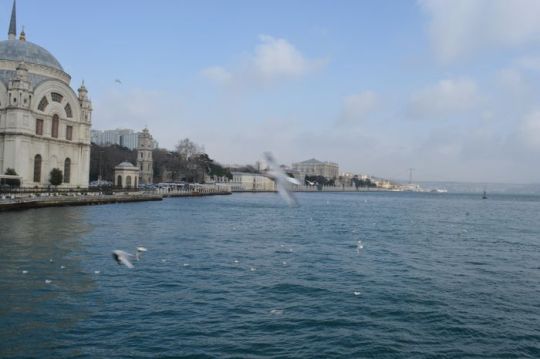
Our Lady of the Fishes
The buildings seen just outside Yedi Kuleh gate are the hospitals, lunatic asylum, and orphan schools, belonging to the Greek and Armenian communities of Constantinople; and the Greek Shrine of Our Lady of the Fishes.
The first outer tower passed on the way from Yedi Kuleh to Silivri Kapusu (Silivri Gate) bears an ancient inscription. The closed gate which comes next is probably the old Bhegion Gate; and the next but two, farther on, which was partly destroyed by the earthquake of 1894, and of which only the two sides bearing an inscription and a cross are now left standing, was built by John Pakeologus in 1433. On the ninth inner tower are carved the names of the Emperors Leo and Constantine. The. tenth and eleventh outer towers are assigned to John Palaeologus, who reigned from 1433 to 1444. The inscription seen on the city side of the tower on the right when entering Silivri Gate sets forth that the gate was called the Spring Gatey from the processions of pilgrims which usually passed through it on their way to the monastery of Our Lady of the Fishes.
Ali Pasha Tepelen
Ibrahim Pasha’s Mosque, just within the gate, is supposed to have once been St. Anne’s Church. In the cemetery attached to the mosque may be seen some three or four tombstones on the graves of women, unique from being artistically carved on both sides. Silivri Gate is the one by which Alexius Strategopoulo, the general of Michael Palaeologus, entered by stratagem on the night of the 6th of August 1261, with 800 men, and took the city from the Latins. The three graves seen at the end of the cemetery opposite the gate contain the decapitated heads of the celebrated Ali Pasha Tepelen mentioned in Byron’s poems, and of his two sons, Yely and Muktar.
The third outer tower beyond Silivri Kapu was, according to the inscription on it, built by John Palseologus in 1439.
Ymi Kapu (New Gate), which comes next, is the third public gate from the Marmora, and is also called Mevlehaneh Kapusu, from the convent of Mevlevi or Dancing Dervishes in the street opposite it. These dervishes perform on Thursdays just after mid-day. Yen! Kapu is the Melandesias Gate of the Byzantines, which led to the village of Melantiade, now Buyuk Checkmedjeh. Of the two Greek inscriptions, that seen on one side of the gate sets forth that Cyrus, prefect of the city, erected wall within wall for the beloved sovereign (Theodosius II.) in sixty days. The inscription on the other side of the gate is to the effect that the breastwork was restored in the reign of Justin and Sophia (566-578) by Narses, the most glorious
Spatharius, architect to that emperor. The Latin inscription also seen on the gate is merely a Latin rendering of the first of the two Greek inscriptions, and runs thus : Theodosii jussis gemino nec mense peracto Constantinus ovans hcec mania firma locavit. Tam cito tarn stabilem Pallas vix conderet arcem ( By order of Theodosius, Constantine triumphantly erected this stronghold in less than two months. Pallas herself could scarcely build so strong a fortress in so short a time’).
1 note
·
View note
Photo

Our Lady of the Fishes
The buildings seen just outside Yedi Kuleh gate are the hospitals, lunatic asylum, and orphan schools, belonging to the Greek and Armenian communities of Constantinople; and the Greek Shrine of Our Lady of the Fishes.
The first outer tower passed on the way from Yedi Kuleh to Silivri Kapusu (Silivri Gate) bears an ancient inscription. The closed gate which comes next is probably the old Bhegion Gate; and the next but two, farther on, which was partly destroyed by the earthquake of 1894, and of which only the two sides bearing an inscription and a cross are now left standing, was built by John Pakeologus in 1433. On the ninth inner tower are carved the names of the Emperors Leo and Constantine. The. tenth and eleventh outer towers are assigned to John Palaeologus, who reigned from 1433 to 1444. The inscription seen on the city side of the tower on the right when entering Silivri Gate sets forth that the gate was called the Spring Gatey from the processions of pilgrims which usually passed through it on their way to the monastery of Our Lady of the Fishes.
Ali Pasha Tepelen
Ibrahim Pasha’s Mosque, just within the gate, is supposed to have once been St. Anne’s Church. In the cemetery attached to the mosque may be seen some three or four tombstones on the graves of women, unique from being artistically carved on both sides. Silivri Gate is the one by which Alexius Strategopoulo, the general of Michael Palaeologus, entered by stratagem on the night of the 6th of August 1261, with 800 men, and took the city from the Latins. The three graves seen at the end of the cemetery opposite the gate contain the decapitated heads of the celebrated Ali Pasha Tepelen mentioned in Byron’s poems, and of his two sons, Yely and Muktar.
The third outer tower beyond Silivri Kapu was, according to the inscription on it, built by John Palseologus in 1439.
Ymi Kapu (New Gate), which comes next, is the third public gate from the Marmora, and is also called Mevlehaneh Kapusu, from the convent of Mevlevi or Dancing Dervishes in the street opposite it. These dervishes perform on Thursdays just after mid-day. Yen! Kapu is the Melandesias Gate of the Byzantines, which led to the village of Melantiade, now Buyuk Checkmedjeh. Of the two Greek inscriptions, that seen on one side of the gate sets forth that Cyrus, prefect of the city, erected wall within wall for the beloved sovereign (Theodosius II.) in sixty days. The inscription on the other side of the gate is to the effect that the breastwork was restored in the reign of Justin and Sophia (566-578) by Narses, the most glorious
Spatharius, architect to that emperor. The Latin inscription also seen on the gate is merely a Latin rendering of the first of the two Greek inscriptions, and runs thus : Theodosii jussis gemino nec mense peracto Constantinus ovans hcec mania firma locavit. Tam cito tarn stabilem Pallas vix conderet arcem ( By order of Theodosius, Constantine triumphantly erected this stronghold in less than two months. Pallas herself could scarcely build so strong a fortress in so short a time’).
0 notes
Photo

Our Lady of the Fishes
The buildings seen just outside Yedi Kuleh gate are the hospitals, lunatic asylum, and orphan schools, belonging to the Greek and Armenian communities of Constantinople; and the Greek Shrine of Our Lady of the Fishes.
The first outer tower passed on the way from Yedi Kuleh to Silivri Kapusu (Silivri Gate) bears an ancient inscription. The closed gate which comes next is probably the old Bhegion Gate; and the next but two, farther on, which was partly destroyed by the earthquake of 1894, and of which only the two sides bearing an inscription and a cross are now left standing, was built by John Pakeologus in 1433. On the ninth inner tower are carved the names of the Emperors Leo and Constantine. The. tenth and eleventh outer towers are assigned to John Palaeologus, who reigned from 1433 to 1444. The inscription seen on the city side of the tower on the right when entering Silivri Gate sets forth that the gate was called the Spring Gatey from the processions of pilgrims which usually passed through it on their way to the monastery of Our Lady of the Fishes.
Ali Pasha Tepelen
Ibrahim Pasha’s Mosque, just within the gate, is supposed to have once been St. Anne’s Church. In the cemetery attached to the mosque may be seen some three or four tombstones on the graves of women, unique from being artistically carved on both sides. Silivri Gate is the one by which Alexius Strategopoulo, the general of Michael Palaeologus, entered by stratagem on the night of the 6th of August 1261, with 800 men, and took the city from the Latins. The three graves seen at the end of the cemetery opposite the gate contain the decapitated heads of the celebrated Ali Pasha Tepelen mentioned in Byron’s poems, and of his two sons, Yely and Muktar.
The third outer tower beyond Silivri Kapu was, according to the inscription on it, built by John Palseologus in 1439.
Ymi Kapu (New Gate), which comes next, is the third public gate from the Marmora, and is also called Mevlehaneh Kapusu, from the convent of Mevlevi or Dancing Dervishes in the street opposite it. These dervishes perform on Thursdays just after mid-day. Yen! Kapu is the Melandesias Gate of the Byzantines, which led to the village of Melantiade, now Buyuk Checkmedjeh. Of the two Greek inscriptions, that seen on one side of the gate sets forth that Cyrus, prefect of the city, erected wall within wall for the beloved sovereign (Theodosius II.) in sixty days. The inscription on the other side of the gate is to the effect that the breastwork was restored in the reign of Justin and Sophia (566-578) by Narses, the most glorious
Spatharius, architect to that emperor. The Latin inscription also seen on the gate is merely a Latin rendering of the first of the two Greek inscriptions, and runs thus : Theodosii jussis gemino nec mense peracto Constantinus ovans hcec mania firma locavit. Tam cito tarn stabilem Pallas vix conderet arcem ( By order of Theodosius, Constantine triumphantly erected this stronghold in less than two months. Pallas herself could scarcely build so strong a fortress in so short a time’).
0 notes
Text
New Post has been published on Lalka
Our Lady of the Fishes
The buildings seen just outside Yedi Kuleh gate are the hospitals, lunatic asylum, and orphan schools, belonging to the Greek and Armenian communities of Constantinople; and the Greek Shrine of Our Lady of the Fishes.
The first outer tower passed on the way from Yedi Kuleh to Silivri Kapusu (Silivri Gate) bears an ancient inscription. The closed gate which comes next is probably the old Bhegion Gate; and the next but two, farther on, which was partly destroyed by the earthquake of 1894, and of which only the two sides bearing an inscription and a cross are now left standing, was built by John Pakeologus in 1433. On the ninth inner tower are carved the names of the Emperors Leo and Constantine. The. tenth and eleventh outer towers are assigned to John Palaeologus, who reigned from 1433 to 1444. The inscription seen on the city side of the tower on the right when entering Silivri Gate sets forth that the gate was called the Spring Gatey from the processions of pilgrims which usually passed through it on their way to the monastery of Our Lady of the Fishes.
Ali Pasha Tepelen
Ibrahim Pasha’s Mosque, just within the gate, is supposed to have once been St. Anne’s Church. In the cemetery attached to the mosque may be seen some three or four tombstones on the graves of women, unique from being artistically carved on both sides. Silivri Gate is the one by which Alexius Strategopoulo, the general of Michael Palaeologus, entered by stratagem on the night of the 6th of August 1261, with 800 men, and took the city from the Latins. The three graves seen at the end of the cemetery opposite the gate contain the decapitated heads of the celebrated Ali Pasha Tepelen mentioned in Byron’s poems, and of his two sons, Yely and Muktar.
The third outer tower beyond Silivri Kapu was, according to the inscription on it, built by John Palseologus in 1439.
Ymi Kapu (New Gate), which comes next, is the third public gate from the Marmora, and is also called Mevlehaneh Kapusu, from the convent of Mevlevi or Dancing Dervishes in the street opposite it. These dervishes perform on Thursdays just after mid-day. Yen! Kapu is the Melandesias Gate of the Byzantines, which led to the village of Melantiade, now Buyuk Checkmedjeh. Of the two Greek inscriptions, that seen on one side of the gate sets forth that Cyrus, prefect of the city, erected wall within wall for the beloved sovereign (Theodosius II.) in sixty days. The inscription on the other side of the gate is to the effect that the breastwork was restored in the reign of Justin and Sophia (566-578) by Narses, the most glorious
Spatharius, architect to that emperor. The Latin inscription also seen on the gate is merely a Latin rendering of the first of the two Greek inscriptions, and runs thus : Theodosii jussis gemino nec mense peracto Constantinus ovans hcec mania firma locavit. Tam cito tarn stabilem Pallas vix conderet arcem ( By order of Theodosius, Constantine triumphantly erected this stronghold in less than two months. Pallas herself could scarcely build so strong a fortress in so short a time’).
0 notes
Photo
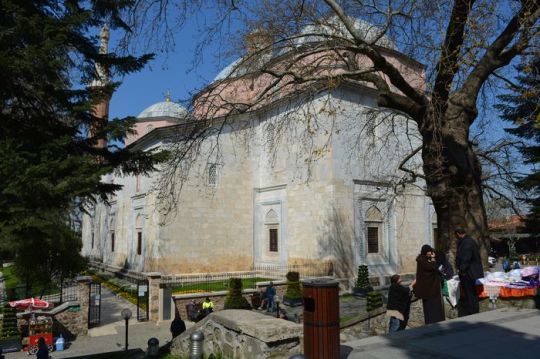
Our Lady of the Fishes
The buildings seen just outside Yedi Kuleh gate are the hospitals, lunatic asylum, and orphan schools, belonging to the Greek and Armenian communities of Constantinople; and the Greek Shrine of Our Lady of the Fishes.
The first outer tower passed on the way from Yedi Kuleh to Silivri Kapusu (Silivri Gate) bears an ancient inscription. The closed gate which comes next is probably the old Bhegion Gate; and the next but two, farther on, which was partly destroyed by the earthquake of 1894, and of which only the two sides bearing an inscription and a cross are now left standing, was built by John Pakeologus in 1433. On the ninth inner tower are carved the names of the Emperors Leo and Constantine. The. tenth and eleventh outer towers are assigned to John Palaeologus, who reigned from 1433 to 1444. The inscription seen on the city side of the tower on the right when entering Silivri Gate sets forth that the gate was called the Spring Gatey from the processions of pilgrims which usually passed through it on their way to the monastery of Our Lady of the Fishes.
Ali Pasha Tepelen
Ibrahim Pasha’s Mosque, just within the gate, is supposed to have once been St. Anne’s Church. In the cemetery attached to the mosque may be seen some three or four tombstones on the graves of women, unique from being artistically carved on both sides. Silivri Gate is the one by which Alexius Strategopoulo, the general of Michael Palaeologus, entered by stratagem on the night of the 6th of August 1261, with 800 men, and took the city from the Latins. The three graves seen at the end of the cemetery opposite the gate contain the decapitated heads of the celebrated Ali Pasha Tepelen mentioned in Byron’s poems, and of his two sons, Yely and Muktar.
The third outer tower beyond Silivri Kapu was, according to the inscription on it, built by John Palseologus in 1439.
Ymi Kapu (New Gate), which comes next, is the third public gate from the Marmora, and is also called Mevlehaneh Kapusu, from the convent of Mevlevi or Dancing Dervishes in the street opposite it. These dervishes perform on Thursdays just after mid-day. Yen! Kapu is the Melandesias Gate of the Byzantines, which led to the village of Melantiade, now Buyuk Checkmedjeh. Of the two Greek inscriptions, that seen on one side of the gate sets forth that Cyrus, prefect of the city, erected wall within wall for the beloved sovereign (Theodosius II.) in sixty days. The inscription on the other side of the gate is to the effect that the breastwork was restored in the reign of Justin and Sophia (566-578) by Narses, the most glorious
Spatharius, architect to that emperor. The Latin inscription also seen on the gate is merely a Latin rendering of the first of the two Greek inscriptions, and runs thus : Theodosii jussis gemino nec mense peracto Constantinus ovans hcec mania firma locavit. Tam cito tarn stabilem Pallas vix conderet arcem ( By order of Theodosius, Constantine triumphantly erected this stronghold in less than two months. Pallas herself could scarcely build so strong a fortress in so short a time’).
0 notes
Photo
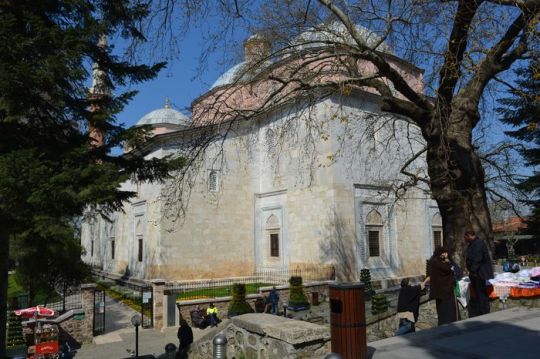
Our Lady of the Fishes
The buildings seen just outside Yedi Kuleh gate are the hospitals, lunatic asylum, and orphan schools, belonging to the Greek and Armenian communities of Constantinople; and the Greek Shrine of Our Lady of the Fishes.
The first outer tower passed on the way from Yedi Kuleh to Silivri Kapusu (Silivri Gate) bears an ancient inscription. The closed gate which comes next is probably the old Bhegion Gate; and the next but two, farther on, which was partly destroyed by the earthquake of 1894, and of which only the two sides bearing an inscription and a cross are now left standing, was built by John Pakeologus in 1433. On the ninth inner tower are carved the names of the Emperors Leo and Constantine. The. tenth and eleventh outer towers are assigned to John Palaeologus, who reigned from 1433 to 1444. The inscription seen on the city side of the tower on the right when entering Silivri Gate sets forth that the gate was called the Spring Gatey from the processions of pilgrims which usually passed through it on their way to the monastery of Our Lady of the Fishes.
Ali Pasha Tepelen
Ibrahim Pasha’s Mosque, just within the gate, is supposed to have once been St. Anne’s Church. In the cemetery attached to the mosque may be seen some three or four tombstones on the graves of women, unique from being artistically carved on both sides. Silivri Gate is the one by which Alexius Strategopoulo, the general of Michael Palaeologus, entered by stratagem on the night of the 6th of August 1261, with 800 men, and took the city from the Latins. The three graves seen at the end of the cemetery opposite the gate contain the decapitated heads of the celebrated Ali Pasha Tepelen mentioned in Byron’s poems, and of his two sons, Yely and Muktar.
The third outer tower beyond Silivri Kapu was, according to the inscription on it, built by John Palseologus in 1439.
Ymi Kapu (New Gate), which comes next, is the third public gate from the Marmora, and is also called Mevlehaneh Kapusu, from the convent of Mevlevi or Dancing Dervishes in the street opposite it. These dervishes perform on Thursdays just after mid-day. Yen! Kapu is the Melandesias Gate of the Byzantines, which led to the village of Melantiade, now Buyuk Checkmedjeh. Of the two Greek inscriptions, that seen on one side of the gate sets forth that Cyrus, prefect of the city, erected wall within wall for the beloved sovereign (Theodosius II.) in sixty days. The inscription on the other side of the gate is to the effect that the breastwork was restored in the reign of Justin and Sophia (566-578) by Narses, the most glorious
Spatharius, architect to that emperor. The Latin inscription also seen on the gate is merely a Latin rendering of the first of the two Greek inscriptions, and runs thus : Theodosii jussis gemino nec mense peracto Constantinus ovans hcec mania firma locavit. Tam cito tarn stabilem Pallas vix conderet arcem ( By order of Theodosius, Constantine triumphantly erected this stronghold in less than two months. Pallas herself could scarcely build so strong a fortress in so short a time’).
0 notes
Photo

Our Lady of the Fishes
The buildings seen just outside Yedi Kuleh gate are the hospitals, lunatic asylum, and orphan schools, belonging to the Greek and Armenian communities of Constantinople; and the Greek Shrine of Our Lady of the Fishes.
The first outer tower passed on the way from Yedi Kuleh to Silivri Kapusu (Silivri Gate) bears an ancient inscription. The closed gate which comes next is probably the old Bhegion Gate; and the next but two, farther on, which was partly destroyed by the earthquake of 1894, and of which only the two sides bearing an inscription and a cross are now left standing, was built by John Pakeologus in 1433. On the ninth inner tower are carved the names of the Emperors Leo and Constantine. The. tenth and eleventh outer towers are assigned to John Palaeologus, who reigned from 1433 to 1444. The inscription seen on the city side of the tower on the right when entering Silivri Gate sets forth that the gate was called the Spring Gatey from the processions of pilgrims which usually passed through it on their way to the monastery of Our Lady of the Fishes.
Ali Pasha Tepelen
Ibrahim Pasha’s Mosque, just within the gate, is supposed to have once been St. Anne’s Church. In the cemetery attached to the mosque may be seen some three or four tombstones on the graves of women, unique from being artistically carved on both sides. Silivri Gate is the one by which Alexius Strategopoulo, the general of Michael Palaeologus, entered by stratagem on the night of the 6th of August 1261, with 800 men, and took the city from the Latins. The three graves seen at the end of the cemetery opposite the gate contain the decapitated heads of the celebrated Ali Pasha Tepelen mentioned in Byron’s poems, and of his two sons, Yely and Muktar.
The third outer tower beyond Silivri Kapu was, according to the inscription on it, built by John Palseologus in 1439.
Ymi Kapu (New Gate), which comes next, is the third public gate from the Marmora, and is also called Mevlehaneh Kapusu, from the convent of Mevlevi or Dancing Dervishes in the street opposite it. These dervishes perform on Thursdays just after mid-day. Yen! Kapu is the Melandesias Gate of the Byzantines, which led to the village of Melantiade, now Buyuk Checkmedjeh. Of the two Greek inscriptions, that seen on one side of the gate sets forth that Cyrus, prefect of the city, erected wall within wall for the beloved sovereign (Theodosius II.) in sixty days. The inscription on the other side of the gate is to the effect that the breastwork was restored in the reign of Justin and Sophia (566-578) by Narses, the most glorious
Spatharius, architect to that emperor. The Latin inscription also seen on the gate is merely a Latin rendering of the first of the two Greek inscriptions, and runs thus : Theodosii jussis gemino nec mense peracto Constantinus ovans hcec mania firma locavit. Tam cito tarn stabilem Pallas vix conderet arcem ( By order of Theodosius, Constantine triumphantly erected this stronghold in less than two months. Pallas herself could scarcely build so strong a fortress in so short a time’).
0 notes
Photo
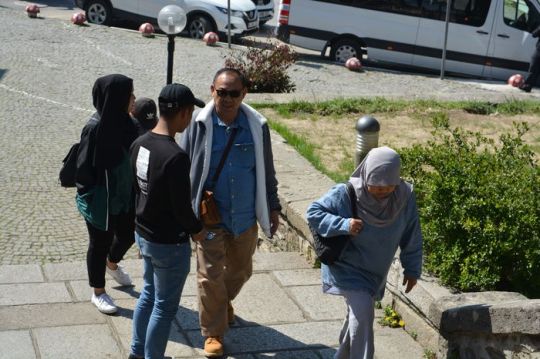
Our Lady of the Fishes
The buildings seen just outside Yedi Kuleh gate are the hospitals, lunatic asylum, and orphan schools, belonging to the Greek and Armenian communities of Constantinople; and the Greek Shrine of Our Lady of the Fishes.
The first outer tower passed on the way from Yedi Kuleh to Silivri Kapusu (Silivri Gate) bears an ancient inscription. The closed gate which comes next is probably the old Bhegion Gate; and the next but two, farther on, which was partly destroyed by the earthquake of 1894, and of which only the two sides bearing an inscription and a cross are now left standing, was built by John Pakeologus in 1433. On the ninth inner tower are carved the names of the Emperors Leo and Constantine. The. tenth and eleventh outer towers are assigned to John Palaeologus, who reigned from 1433 to 1444. The inscription seen on the city side of the tower on the right when entering Silivri Gate sets forth that the gate was called the Spring Gatey from the processions of pilgrims which usually passed through it on their way to the monastery of Our Lady of the Fishes.
Ali Pasha Tepelen
Ibrahim Pasha’s Mosque, just within the gate, is supposed to have once been St. Anne’s Church. In the cemetery attached to the mosque may be seen some three or four tombstones on the graves of women, unique from being artistically carved on both sides. Silivri Gate is the one by which Alexius Strategopoulo, the general of Michael Palaeologus, entered by stratagem on the night of the 6th of August 1261, with 800 men, and took the city from the Latins. The three graves seen at the end of the cemetery opposite the gate contain the decapitated heads of the celebrated Ali Pasha Tepelen mentioned in Byron’s poems, and of his two sons, Yely and Muktar.
The third outer tower beyond Silivri Kapu was, according to the inscription on it, built by John Palseologus in 1439.
Ymi Kapu (New Gate), which comes next, is the third public gate from the Marmora, and is also called Mevlehaneh Kapusu, from the convent of Mevlevi or Dancing Dervishes in the street opposite it. These dervishes perform on Thursdays just after mid-day. Yen! Kapu is the Melandesias Gate of the Byzantines, which led to the village of Melantiade, now Buyuk Checkmedjeh. Of the two Greek inscriptions, that seen on one side of the gate sets forth that Cyrus, prefect of the city, erected wall within wall for the beloved sovereign (Theodosius II.) in sixty days. The inscription on the other side of the gate is to the effect that the breastwork was restored in the reign of Justin and Sophia (566-578) by Narses, the most glorious
Spatharius, architect to that emperor. The Latin inscription also seen on the gate is merely a Latin rendering of the first of the two Greek inscriptions, and runs thus : Theodosii jussis gemino nec mense peracto Constantinus ovans hcec mania firma locavit. Tam cito tarn stabilem Pallas vix conderet arcem ( By order of Theodosius, Constantine triumphantly erected this stronghold in less than two months. Pallas herself could scarcely build so strong a fortress in so short a time’).
0 notes
Text
Aksidenti në Levan - Tepelenë/ Shkon në 3 të vdekur e 3 të plagosur
Aksidenti në Levan – Tepelenë/ Shkon në 3 të vdekur e 3 të plagosur
Fier – Ka shkuar në tre numuri i të vdelurve në aksidentin e mbrëmjes së sotme në aksin e autostradës Levan – Tepelenë. Burime zyrtare nga Policia Fier pohuan se ka ndërruar jetë edhe gruaja e policit të FNSH Sokrat Lela, Fatbardha.
Aksidenti ndodhi mbrëmjen e sotme në aksin e rrugës Levan – Tepelenë në afërsi të Buzmadhit. Në automjetin tip Ford udhëtonte Sokrati me bashkëshorten e tij dhe…

View On WordPress
0 notes
Text
Aksident në Levan-Tepelenë, plagosen rëndë 8 persona
Aksident në Levan-Tepelenë, plagosen rëndë 8 persona
Një aksident i rëndë ka ndodhur mbrëmjen e sotme në autostradën Levan- Tepelene në afërsi të fshatit Malas në Mallakastër. Nga informacionet e deritanishme bëhet e ditur se nga përplasja e dy automjeteve tip “Benz” dhe “Renault” janë plagosur rëndë 8 persona.
Në media raportohet se të plagosurit janë transportuar me urgjencë në spitalin e Fierit.
Policia dhe grupi hetimor ndodhen në vend…

View On WordPress
0 notes
Photo
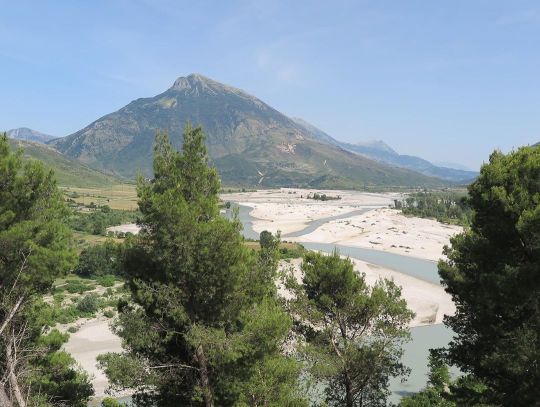
Southern Albania. Photos by: Patrick Müller on Flickr.
(at Tepelenë, Albania)
https://www.instagram.com/p/CAmv-u6phZ6/?igshid=v5whmey3mnp5
#beauty_of_albania#albania#shqiperia#architecture#archilovers#history#europe#ig_europe#traveleurope#travel#tourist#tourism#tepelene#nature#naturephotography#investinalbania#invest#visitalbania#explore#coloursofalbania2019#colorsofalbania
5 notes
·
View notes
